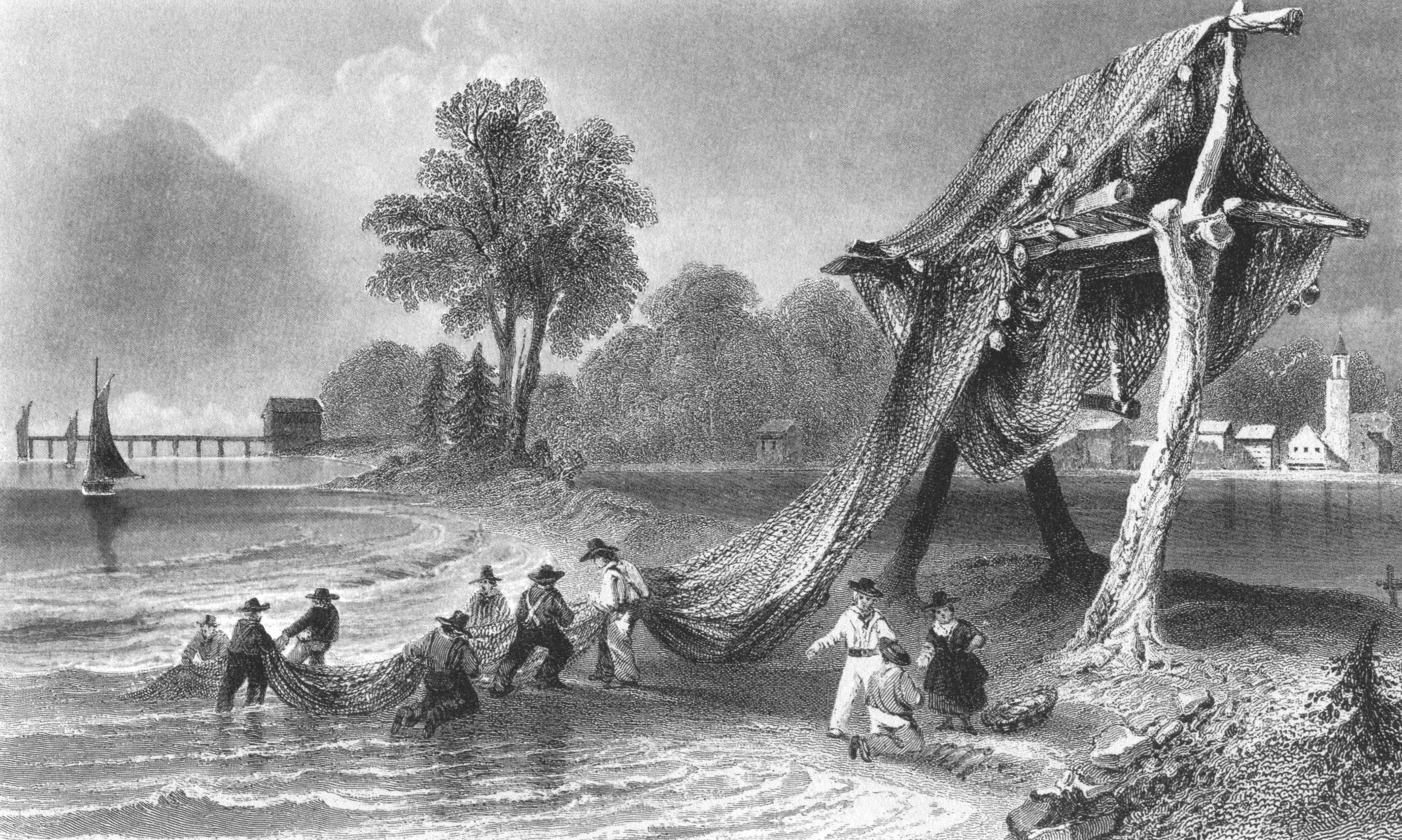Wellington harbour

The first immigrant settler on traditional Huron lands in Prince Edward County, was probably Daniel Reynolds in the 1780s. Known perhaps as "Old Smoke" from his work smoking local fish, the area became known as Smokeville, before being renamed after general Wellington in the 1830s. As a port, or harbour, it is exposed to the prevailing Sou'westerly winds, but given its importance, primarily for agricultural products in the 19th century, many a ship owner and captain used it during the schooner and barley days with a somewhat notorious reputation for bad holding and vessels driven ashore.
Willis Metcalfe [1] writes that Wellington was a most dangerous port to load at, for it had no shelter from the winds, and unless you had the luck to get your anchors down in the blue clay of the bar at the entry, you could not ride out a gale there. The only thing you could do was to try and make it to the nearest shelter, Presquile, which was often dead to windward.
From 1833, the steam paddlewheel Commodore Barrie was a regular caller at the port of Wellington, and it is said that when approaching the harbour she would ring her bell which could be heard for miles around. The Commodore Barrie sank on 4 May 1842 off Point Petre, with her passengers and crew being rescue by the schooner Canada.
In the 1850s there were two small docks with about ten feet of water alongside, and a good wharf; later the village boasted of having three wharves and three warehouses, together with blacksmith shops, general stores, tanneries and sawmills. Again Metcalfe notes that loads of grain for shipment could range all the way from the old post office to Belleville Street.
According to seasoned mariners, Wellington was the most exposed port on the lake, and noted for its many dangers. Seldom a season passed without some vessel getting hurt or driven ashore, leaving her bones to to bleach as a memento of her visit. Despite all this, the small port was a beehive of activity each season, as schooners called there to load shipments of grain, lumber and hops; whitefish, exported in barrels, either smoked or salted, was also a major trade.
Captain William Lobb of Milford, in command of the schooner Highland Beauty, took the last load of grain out of Wellington in 1901. Wellington could possibly have been a splendid harbour of refuge had proper piers and breakwaters been provided, and dredging done to deepen the port. This was never done until the grain trade was over and finished.
In the fall of 1914, dredging was started by the Dredge Hamilton and tug Maggie R. This operation continued until the Macfarlane, Pratt, Hanley Company of Midland went bankrupt. Canada Dredge and Dock Company of Kingston later bought up the equipment, and it is understood that this is all that was ever done. Captain Fred Dewey of Port Robinson was the dredge operator and Captain Fred Bristow of Midland in command of the Maggie R. The remains of both vessels went to a watery grave in the harbour, and were forgotten until the autumn of 2022 when the federal Dept. of Transport did some cleaning up. A few artifacts were recovered by the Prince Edward County Museums and by the Naval Marine Archive.
Notes:
